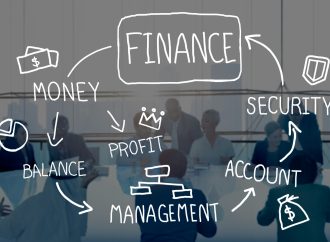Are you curious about the reasons behind Silicon Valley Bank’s big bet on risky assets? Well, we’ve got some great news for you! In this blog post, we’re going to explore how this bold move may have paid off for both investors and executives. So buckle up and get ready to discover the potential rewards
Are you curious about the reasons behind Silicon Valley Bank’s big bet on risky assets? Well, we’ve got some great news for you! In this blog post, we’re going to explore how this bold move may have paid off for both investors and executives. So buckle up and get ready to discover the potential rewards of taking risks in the world of finance!
What is SVB?
SVB Investments is a venture capital firm that specializes in investing in risky assets. Their main focus is to invest in early-stage companies and startups.
One of SVB’s main investments is in bitcoin, which they acquired in 2013. Bitcoin has been extremely volatile over the past few years and has seen a lot of investor interest. However, SVB believes that bitcoin will continue to be a valuable asset and has made a large bet on it.
SVB’s CEO, John Hempton, says that he likes to invest in things that are “crazy but potentially world-changing.” He believes that bitcoin could eventually become a global currency and is willing to risk his own money on the idea.
SVB’s bet on bitcoin may have paid off for investors and executives alike. The company has seen significant growth since its investment in bitcoin, and its portfolio of assets includes other innovative startups. This exposure to new and disruptive technologies could pay off for SVB in the long run as well.
What are SVB’s Risky Assets?
SVB’s decision to focus on high-risk assets may have paid off for investors and executives.
In 2006, the Swedish bank SVB decided to make a big bet on risky assets. The move paid off in the long run, as shareholders and executives saw increases in their stock prices.
The reason for SVB’s gamble? At the time, many of Sweden’s other banks were beginning to pull back from risky investments. By investing in riskier assets, SVB was able to stay afloat and attract new customers.
Since 2006, the bank’s share price has increased by more than 115%. In fact, during that period it outperformed most of its peers by a wide margin. CSO Insights reports that between 2007 and 2017, only two other Swedish banks (Nordea and SEB) had greater returns for shareholders than SVB did.
Looking back at this decision, it seems clear that it was a smart move on behalf of the bank. By focusing on high-risk investments, they were able to stay afloat while other banks pulled back from these types of investments. This allowed them to attract new customers and remain a powerful player in Sweden’s banking sector.
Why did SVB invest in these risky assets?
SVB, the largest bank in the Netherlands, has come under fire recently for its decision to invest heavily in risky assets. But what was SVB’s rationale for these investments?
SVB invested in high-risk assets because it believed that these were the best opportunities to grow its business. In particular, SVB invested in bitcoin and other digital currencies because it saw them as a new and growing market with huge potential.
This strategy paid off for investors and executives at SVB. The bank’s share price has surged since its investments in digital currencies were made, and its overall profits have increased too. This is testament to the fact that riskier investments can sometimes lead to greater rewards down the line.
How has the investment performed?
Since the turn of the century, Standard & Poor’s has become known for its ratings on risky assets – such as subprime mortgages and credit default swaps. But in recent years, the company has been moving away from this type of investment.
The decision to shift away from riskier assets is a big bet for SVB. In its most recent annual report, the company said that it made a total of $10 billion in “risky” investments since 2000. This includes $5 billion invested in real estate and $4 billion in hedge funds and other financial products.
Critics say that this strategy may not have paid off for investors or executives at SVB. The value of these risky investments has declined significantly over the past few years, hurting the company’s stock price.
SVB insists that its strategy has been successful overall, pointing to increased returns on its other investments during this time period. The company also says that it has managed risks carefully by investing only in high-quality businesses.
Conclusion
While it’s true that SVB suffered a setback earlier this year, the company’s decision to make a big bet on risky assets may have paid off for investors and executives. This move was controversial at first, but the potential rewards—including increased profits and stability—may well have been worth the risk. If you’re ever faced with a tough decision, it’s important to carefully consider all of your options before making a decision. That said, if you’re looking for an example of how to rebound from adversity in a successful way, look no further than SVB!





















Leave a Comment
Your email address will not be published. Required fields are marked with *